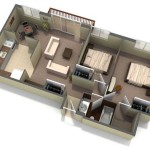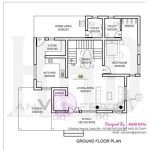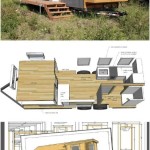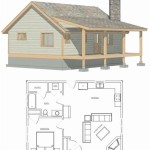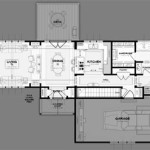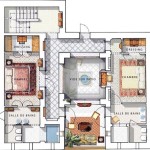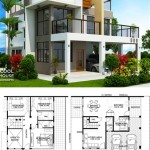Historic Gothic Revival House Plans: A Glimpse into Architectural History
The Gothic Revival architectural style, popular during the 19th century, drew inspiration from the medieval Gothic period. Characterized by pointed arches, steep roofs, ornate details, and a sense of verticality, Gothic Revival houses offer a unique blend of historical charm and romantic sensibility. Examining historic Gothic Revival house plans provides valuable insight into the design principles and lifestyle aspirations of the era.
The resurgence of Gothic architecture in the 1800s was fueled by a complex interplay of factors. Romantic ideals, a renewed interest in the medieval past, and the burgeoning availability of pattern books contributed to the style's popularity. Gothic Revival was embraced across various building types, including churches, civic structures, and domestic residences, adapting its characteristic features to suit different functions and scales.
Historic Gothic Revival house plans typically showcase key architectural elements. Pointed arches are a defining feature, appearing in windows, doorways, and decorative motifs. Steeply pitched roofs, often adorned with decorative bargeboards and finials, create a dramatic silhouette. Ornamental details such as tracery, crockets, and gargoyles add to the overall richness and complexity of the design.
Window design plays a crucial role in the Gothic Revival aesthetic. Tall, narrow windows with pointed arches are common, often featuring intricate tracery patterns within the glass. Stained glass, though not universally employed, adds a vibrant splash of color and reinforces the connection to medieval church architecture. Bay windows and oriel windows, projecting outward from the main structure, provide additional light and visual interest.
The floor plans of historic Gothic Revival houses often reflect the social conventions of the Victorian era. A clear distinction between public and private spaces was typically maintained. Formal reception rooms, such as parlors and dining rooms, were located towards the front of the house, while private family spaces, including bedrooms and kitchens, were situated towards the rear. Hallways and staircases played a significant role in organizing the flow of movement within the house.
Verandahs and porches, often embellished with intricate woodwork, were common features of Gothic Revival houses, blurring the lines between indoor and outdoor spaces. These semi-enclosed areas provided a sheltered space for relaxation and socializing, contributing to the overall romantic ambiance of the home.
The construction materials used in historic Gothic Revival houses varied depending on regional availability and the homeowner's budget. Stone, brick, and wood were frequently employed. Wood framing with decorative cladding, mimicking the appearance of stone, offered a more affordable alternative to solid masonry construction. The use of cast iron became increasingly common during the later part of the 19th century, allowing for the mass production of ornate details like railings and decorative elements.
Studying historic Gothic Revival house plans reveals variations within the style. Some designs emphasize elaborate ornamentation and intricate detailing, while others adopt a more restrained approach. Regional interpretations of the style also emerged, reflecting local building traditions and climatic conditions.
Accessing historic Gothic Revival house plans offers valuable resources for architects, historians, and enthusiasts. Archival collections, historical societies, and online databases provide access to a wealth of original drawings and blueprints. These primary sources offer a detailed understanding of the design process and construction techniques employed during the 19th century.
The legacy of Gothic Revival architecture continues to influence contemporary design. Elements of the style can be seen in modern homes that seek to recapture the romantic charm and historical character of the past. Adapting Gothic Revival elements to suit contemporary needs and preferences allows architects and homeowners to create spaces that blend historical inspiration with modern functionality.
The enduring appeal of Gothic Revival houses lies in their ability to evoke a sense of history and romance. The pointed arches, steep roofs, and ornate details transport us back to a different era, offering a glimpse into the architectural aspirations and social values of the 19th century. Historic Gothic Revival house plans provide a valuable window into this fascinating period of architectural history.
The study of historic house plans offers a unique opportunity to understand the evolution of domestic architecture. By analyzing the layout, materials, and stylistic choices, researchers can gain insights into the lifestyles, social structures, and technological advancements of past eras. These plans serve as a tangible link to the past, preserving the architectural heritage of generations gone by.
The preservation of historic Gothic Revival houses and their associated plans is crucial for maintaining a tangible connection to the past. These structures represent a significant chapter in architectural history and offer valuable insights into the cultural and social contexts in which they were built. Continued efforts to document, preserve, and restore these historic buildings ensure that future generations can appreciate and learn from their architectural legacy.

Gothic Revival House Plans Google Search Victorian Vintage Floor

Gothic Revival Style Christine Huckins Franck Architect Llc House Architecture Vintage Plans

Gothic Revival An Alternative Trend For Victorian Americans House Plans Carpenter

Archi Maps Victorian House Plans Gothic Architecture

Gothic Brick Dwelling Plans Antique Victorian Architecture Vintage House

Gothic Farmhouse Plans House With Photos Vintage

1875 House Upper Norwood London Architecture Of Archiseek Irish Victorian Plans Vintage Gothic

Gothic Revival Style House Plans Floor

Picturesque Houses Gothic Revival Italianate Historic Buildings Of Connecticut

Untitled Victorian House Plans Mansion Floor Plan Homes

